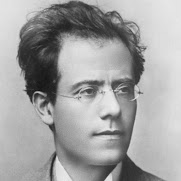In the later part of the 20th century, with the arrival of the synthesiser, records of electronic music became popular. The most famous of them all "Switched on Bach" by Walter/Wendy Carlos became a runaway best seller. Rick Wakeman, trained in classical music & working with "Yes", struck out on his own with "The Six Wives of Henry the VIII" a glorious classical/rock/jazz hybrid. Jean Michel Jarre, son of Maurice Jarre (composer of music for David Lean's films) came up with a concept album "Oxygene". The German band Kraftwerk started off with their "Man Machine."
 The Japanese, pioneers in anything electronic, led the way with the "Yellow Magic Orchestra" the album cover being truly iconic with a Japanese girl in a kimono, electric cables coming out of her open head, Medusa like! (Medusa in Greek mythology, being a winged female, with snakes instead of hair, growing out of her head.) Logic system also made their debut with their eponymously named LP. Jun Fukamachi, produced "Disco Fever over Classic" & "Second Phase" records.
The Japanese, pioneers in anything electronic, led the way with the "Yellow Magic Orchestra" the album cover being truly iconic with a Japanese girl in a kimono, electric cables coming out of her open head, Medusa like! (Medusa in Greek mythology, being a winged female, with snakes instead of hair, growing out of her head.) Logic system also made their debut with their eponymously named LP. Jun Fukamachi, produced "Disco Fever over Classic" & "Second Phase" records.
The Russians, not to be left behind, produced their own (hard to find now) LP called "Metamorphoses" containing electronic versions of works by Bach, Monteverdi, Debussy & some Russian composers.
Most of these composers made many further recordings, some being productive even today. These have made a creative contribution to the musical world & widened the palette of tonal colours available.



























